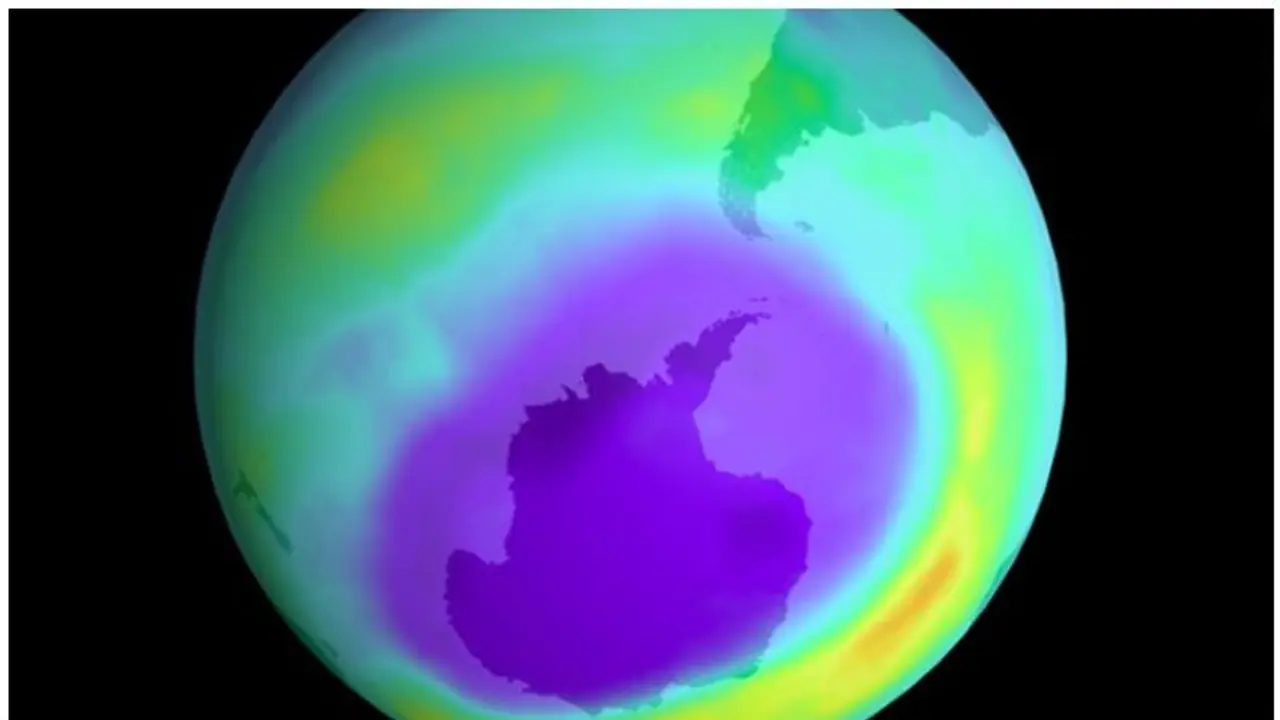According to scientists, a colder-than-normal Southern Hemisphere winter caused a deep and larger-than-average ozone hole, likely lasting until November or early December.
The ozone hole in 2021 has reached its peak and is the 13th greatest since 1979. Scientists from NASA and the National Oceanic and Atmospheric Administration (NOAA) indicated that this year's ozone hole formed similarly to the previous year's. According to scientists, a colder-than-normal Southern Hemisphere winter caused a deep and larger-than-average ozone hole, likely lasting until November or early December. According to Paul Newman, Nasa's head scientist for Earth sciences, "this is a significant ozone hole due to the colder than usual 2021 stratospheric temperatures, and it would have been considerably greater without the Montreal Protocol."

Satellite studies revealed that the ozone hole had reached a maximum size of 24.8 million square kilometres, or about eight times the size of India, before beginning to contract in mid-October. "Colder-than-average temperatures and strong winds in the stratosphere around Antarctica contributed to its magnitude," researchers explained. The ozone hole is a weakening of the ozone layer in the stratosphere over Antarctica that occurs every September when chemically active forms of chlorine and bromine originated from artificial substances are released during interactions on high-altitude polar clouds.
Also Read | French astronaut Thomas Pesquet talks about spotting 'smoke for days and days' from space
As the sun rises in the Antarctic at the end of winter, the reactive chlorine and bromine begin ozone-depleting processes. Scientists at the South Pole Station monitor the ozone hole by launching weather balloons equipped with ozone-measuring sensors known as ozonesondes, which detect the shifting ozone concentrations as the balloon rises into the stratosphere. According to researchers from the Copernicus Atmosphere Monitoring Service, the hole is "much greater than typical," which monitors the ozone layer.
According to experts, while the 2021 Antarctic ozone hole is more significant than typical, it is significantly less than in the late 1990s and early 2000s. The hole has been repairing the damage caused by the Montreal Protocol, which prohibits the discharge of hazardous ozone-depleting chemicals known as chlorofluorocarbons, or CFCs.
Also Read | 'Business park' in space? Jeff Bezos’ Blue Origin unveils its plans; Read more
It should be mentioned that the ozone hole arises yearly over the Antarctic during the spring season from August to October in the southern hemisphere, peaking between mid-September and mid-October. When temperatures in the stratosphere begin to climb in late spring in the Southern Hemisphere, ozone depletion slows.
